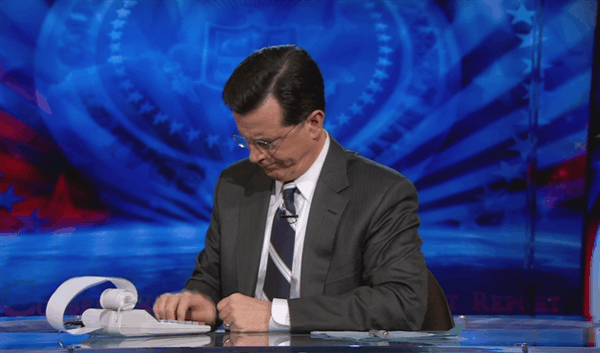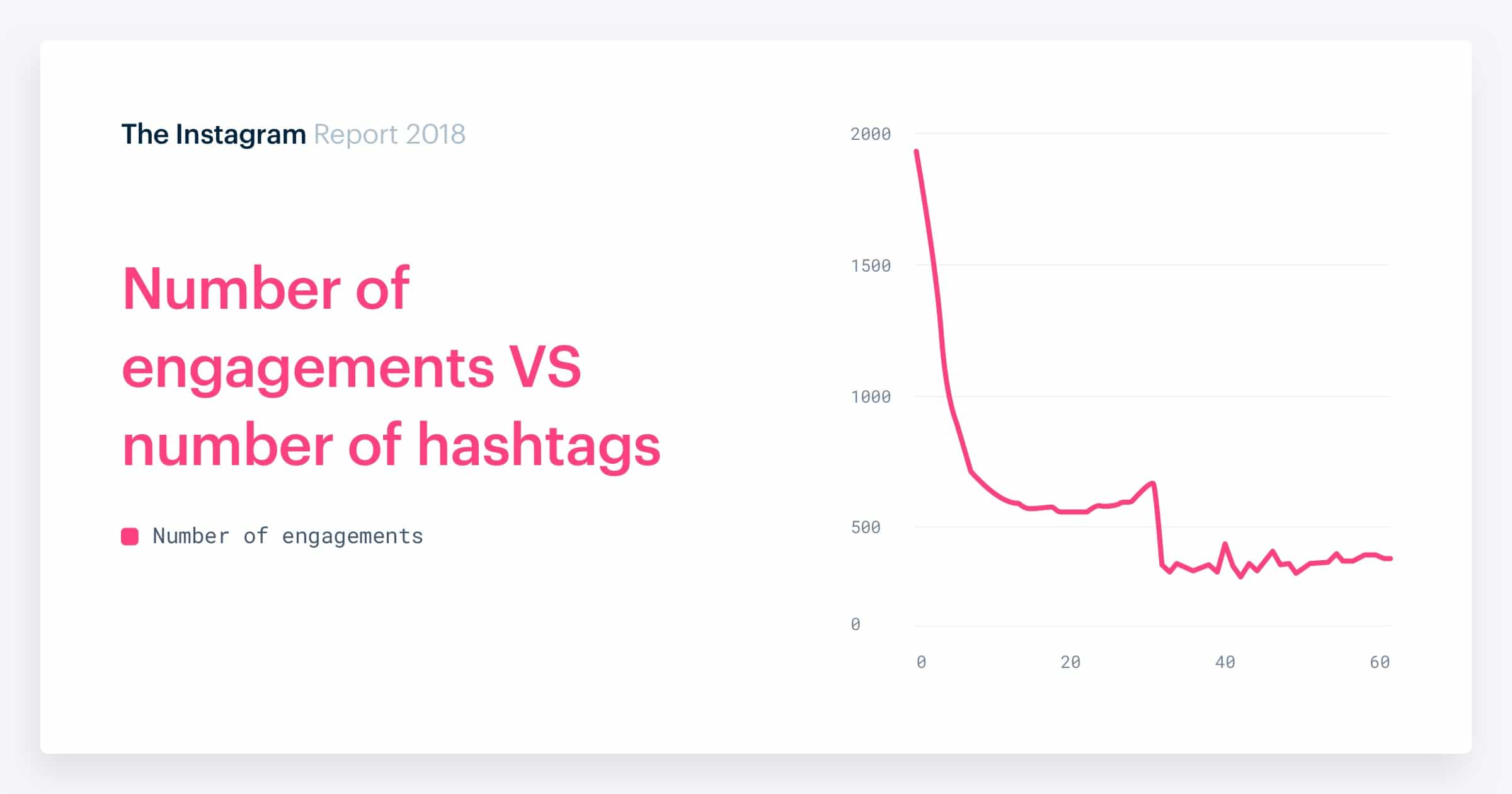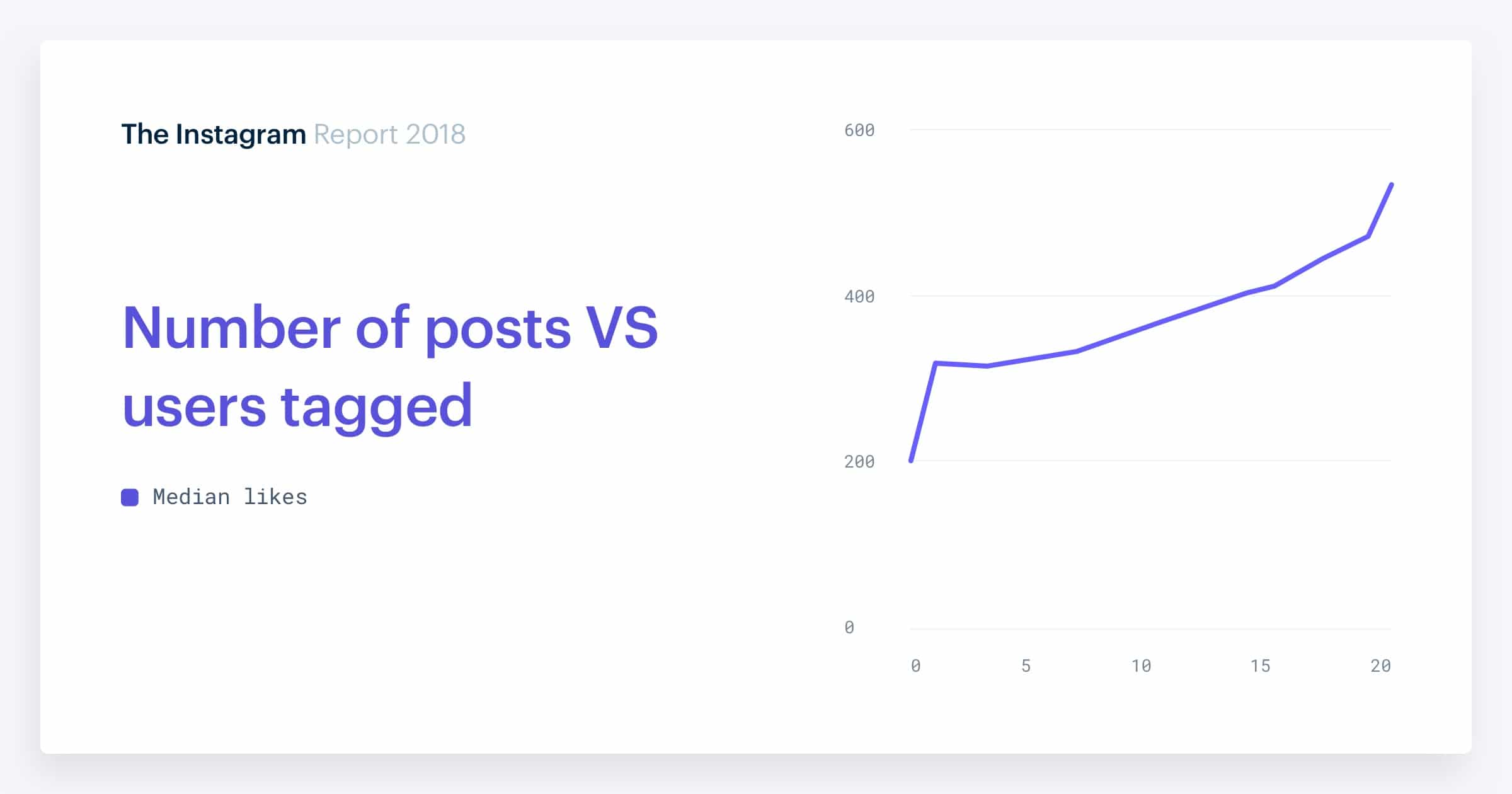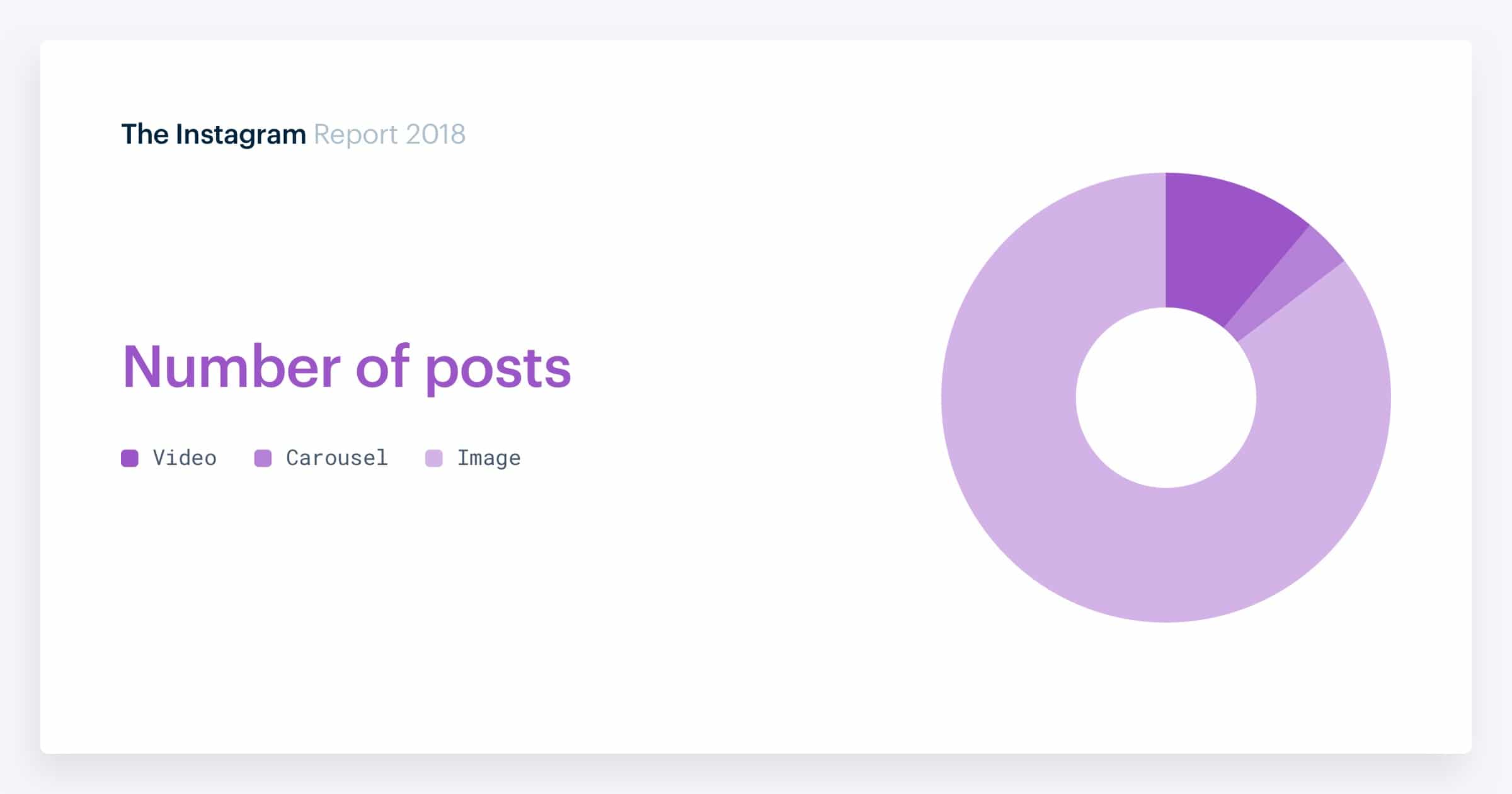Brands, social media marketers, and tech-heads everywhere are always looking for data on the social networks. Who’s using them, what are they posting, and most importantly, what works?
So we’re excited to introduce our brand new Instagram report, aptly titled…The Instagram Report 2018.
It’s a pretty big deal for us – the first major study of social media posts we’ve ever done. And we hope to follow it up with more data for each of the major social networks.
But let’s keep our focus on Instagram for now.
What’s in the report?
There are lots of great social media reports out there already. But they tend to be based on surveys, rather than user behavior.
Our report’s a little bit different. We collected more than 115 million Instagram posts, and let our data scientists crunch the numbers and look for takeaways.

And guess what? They found some!
You can check out the full, interactive report here. But we wanted to give you a few of the biggest bullet points.
The headlines
Here’s a quick idea of what you’re likely to find:
- Average number of likes for an Instagram post: 1,261
- The top 5 Instagram hashtags: #love, #instagood, #fashion, #photooftheday, #style
- 33.3% of Instagram posts contain no hashtags
- Using hashtags in Instagram posts does not increase engagement rates
- Average number of comments for a post: 24.5
- Tagging other Instagram users in posts does increase engagement rates
- Video posts have the highest engagement rate
Let’s dive into each of those in a bit more detail.
Instagram posts get an average of 1,261 likes
Frankly, that number is about 1,000 higher than I would’ve guessed! For most of us, a highly successful Instagram post can hit triple figures, and we’ll be happy with that. 1,200 likes is out of the question!
Now remember, that’s the average. and massive Instagram celebrities are bound to drag the average up.
When we looked at the median – the midpoint between the most and least popular posts – it’s closer to 200. Which sounds about right.
It’s still a little high for my own personal account, but for small brands and budding influencers, 200 likes seems like a reasonable target.
What does this mean?
Clearly, the posts with the highest engagement are dragging the average up for everyone. Our study includes the most popular Instagram posts of all time, with millions of likes and comments.
So naturally, smaller brands and individuals may not be able to reach our average number in their posts.
But it’s still interesting to see how those major accounts skew the average, and what counts as “average” on social media these days.
The top 5 Instagram hashtags in 2017
In our study, the following five hashtags reigned supreme: #love, #instagood, #fashion, #photooftheday, #style.
These were the most-used hashtags last year, but by no means were they the most useful. In fact, the Instagram hashtags with the highest average engagement rate included #ad, #comedy, and #meme.
#ad is a funny one, but it clearly goes to show the power of influencer marketing. This tag has commonly been used to show followers that this post is a paid promotion – although this may no longer be enough.
Engagements is often the key metric by which a sponsored campaign is measured. So if we know that #ad indicates a sponsored campaign, and #ad is also the hashtag that receives the most engagements, then we can deduce that these sponsored campaigns are effective!

What does this mean?
Well first, you probably want to steer clear of those first five hashtags. They’re completely overused, and chances are they won’t make a bit of difference to your posts.
And if you have the budget, perhaps it’s time to consider working with influencers. Even better if you can find effective micro-influencers, as these tend to be cheaper and more suited to your audience.
Learn more about micro-influencers here.
33.3% of Instagram posts contain no hashtags
Perhaps the better way to look at this: 66.6% of Instagram posts (exactly 2/3) contain a hashtag.
The key takeaway here is that hashtags are a really big deal on Instagram. We have a Twitter report coming later this year, and *spoiler alert!*, only about 40% of tweets contain a hashtag.
So Instagram users believe in the power of the # symbol.
What does this mean?
Instagram users are a little more limited than their Twitter cousins when it comes to sharing their posts. There’s no “retweet” function, which makes it a lot more difficult to have your photos appear in someone else’s feed.
So people tend to rely heavily on hashtags to get their content out there. But here’s the thing…
Hashtags don’t seem to increase engagement rates
You read that right: using hashtags in your posts does not make it more likely that your post will receive likes and comments.
This is completely baffling, but the data makes it pretty clear:

Our study found that the average number of engagements actually does down with every hashtag you add. Which is extraordinary, and totally counter-intuitive.
And even more strange: the median number showed exactly the same thing.
Sure, it would make sense that the top 1% of posts would skew our average, because a few massive posts with no hashtags might outweigh all of the smaller ones. But if the median number gives the same effect, then hashtags really must not be all they’re cracked up to.
Right?
What does this mean?
This could mean a ton of things:
- Content quality is the most important factor in triggering engagement, not hashtags.
- Huge Instagram celebrities don’t use hashtags in the same way the rest of us do, and these guys get the most engagement. This is possible, although the median number should minimize this effect.
- Bad posts containing hashtags drag the average down.
- Hashtags don’t really make a difference for engagement. Maybe other users will find your content more easily, but that doesn’t mean they’re going to like it!
We’ve been talking about this in our office a whole lot, and even asked some of our friends. Dave Schneider, CEO and co-founder of NinjaOutreach, offered the following explanation:
“A possible reason is that Instagram could be enforcing an algorithm to discourage users from trying to use hashtags to increase their own reach organically. Which would make their own paid ads a stronger option for increasing reach.”
“Posts with more hashtags also probably give off a distracting, even annoying feel that reeks of desperation (‘hey, notice me, everyone!’). This could make certain people less inclined to interact with the post. That’s just my theory, of course.
“It also makes it look spammy. Personally, we try never to use more than two hashtags in our posts to avoid getting labeled as spam.”
Why do you think we got these results? Please share your thoughts in the comments.
The average number of Instagram comments is 24.5
This is just a quick data point for anybody wondering. We don’t often think of comments as being as valuable as likes, mainly because we get hundreds of likes for a post, and maybe a handful of comments.
But there are posts out there with millions of comments. Here are a couple from our study:
I couldn’t tell you why, but these posts saw an insane number of comments.
What does this mean?
For Instagram marketers, probably not a lot. It’s always nice to increase the number of comments, and campaigns that encourage commenting and tagging others can have the potential to go viral.
And if you do happen to already receive more than 24.5 comments per post, congratulations, you’re above average.
Tagging other people does increase engagement
While hashtags don’t seem to have a positive effect, involving others in your posts does. This is basically a no-brainer – if you tag other users, you’re essentially asking them to react to your post. So naturally engagement rates are higher.

It’s also less clear what brands can do with this information. You can’t tag hundreds of followers in your posts; that’s both spammy and impossible.
But finding natural ways to tag friends and members of your business community in posts is great, and even better if those users are influencers.
This isn’t exactly mindblowing, but the more social you can make social media, the more effective it tends to be.
What does this mean?
If what you care most about is engagement, then try to find authentic ways to tag other Instagram users in your posts.
Video posts have the highest engagement rates
While image posts are still by far the most popular on Instagram, video seems to be the most effective.
Of course, this may be precisely because they are less common:

There are vastly more photos than videos posted at present. And the more that people catch on, the less special video will become. So now is the time to dive in, before everyone else figures it out.
Video’s only getting easier to produce, and now we expect to see these different forms of content being used by brands.
What this means
We’ve been saying it for years (and we’re not alone), but video and social media are best friends. And because Instagram is quite limited content-wise, you need to take advantage of the few options you have.
Good video looks incredible, stands out in the feed, and is definitely more engaging to users.
Conclusion
We’ve only scratched the surface of what’s available in our full report. It’s fun, interactive, and nice to look at too (which never hurts).
It’s clear that some of our preconceived notions about Instagram were spot on: tagging other users definitely helps, as do influencers.
But some others may have been off the mark – we’re looking at you, hashtags! And this has led to plenty of soul searching.
So we want to know: What do you think of these results? Does it make sense, or do you think we made a mistake along the way?
Please let us know below.
Read the full report here.






